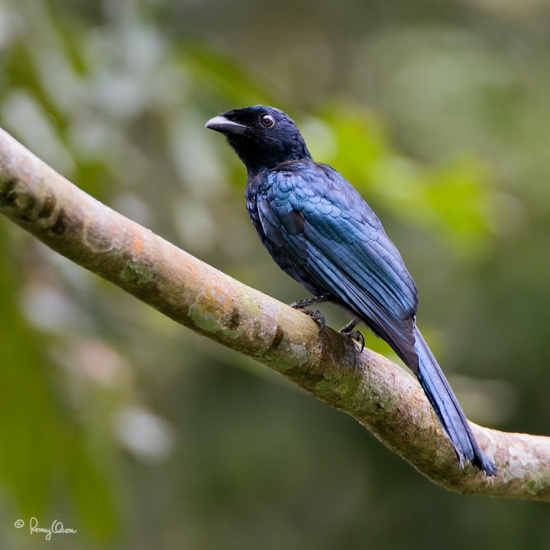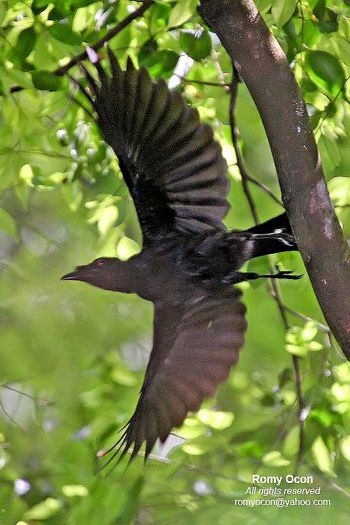Alternative name: Philippine Drongo
- Dicrurus balicassius
Identification
26cm
- Glossy blue violet body (mirabilis with a silky white lower breast to undertail-coverts)
- Darker blue head
- Rather short tail, shallowly forked
- Reddish dark brown eye
Sexes similar. Immatures are browner and less glossy.
The only drongo in its range.
Distribution
South-east Asia: found in the Philippines.
Still common but under threat from deforestation.
Taxonomy
This is a polytypic species[1] consisting of 3 subspecies.
Subspecies[1]
- D. b. abraensis:
- Northern Luzon (Northern Philippines)
- D. b. balicassius:
- Central and southern Luzon, Lubang, Marinduque, Mindoro and Polillo
- D. b. mirabilis:
- Panay, Cebu, Negros, Guimaras, Ticao, Masbate
Habitat
Forest and forest edge usually below 1200 m.
Behaviour
Often seen in pairs or small groups, only occasionally in mixed-species flocks.
Diet
Few data available. Often seen catching insects and other prey by flying from an open perch.
Breeding
A bowl shaped nest is built from twigs and placed on a small branch. Three eggs are laid.
References
- Clements, J. F., T. S. Schulenberg, M. J. Iliff, S. M. Billerman, T. A. Fredericks, J. A. Gerbracht, D. Lepage, B. L. Sullivan, and C. L. Wood. 2021. The eBird/Clements checklist of Birds of the World: v2021. Downloaded from https://www.birds.cornell.edu/clementschecklist/download/
- Del Hoyo, J, A Elliott, and D Christie, eds. 2009. Handbook of the Birds of the World. Volume 14: Bush-shrikes to Old World Sparrows. Barcelona: Lynx Edicions. ISBN 978-8496553507
- BF Member observations
Recommended Citation
- BirdForum Opus contributors. (2025) Balicassiao. In: BirdForum, the forum for wild birds and birding. Retrieved 13 March 2025 from https://www.birdforum.net/opus/Balicassiao
External Links
GSearch checked for 2020 platform.





